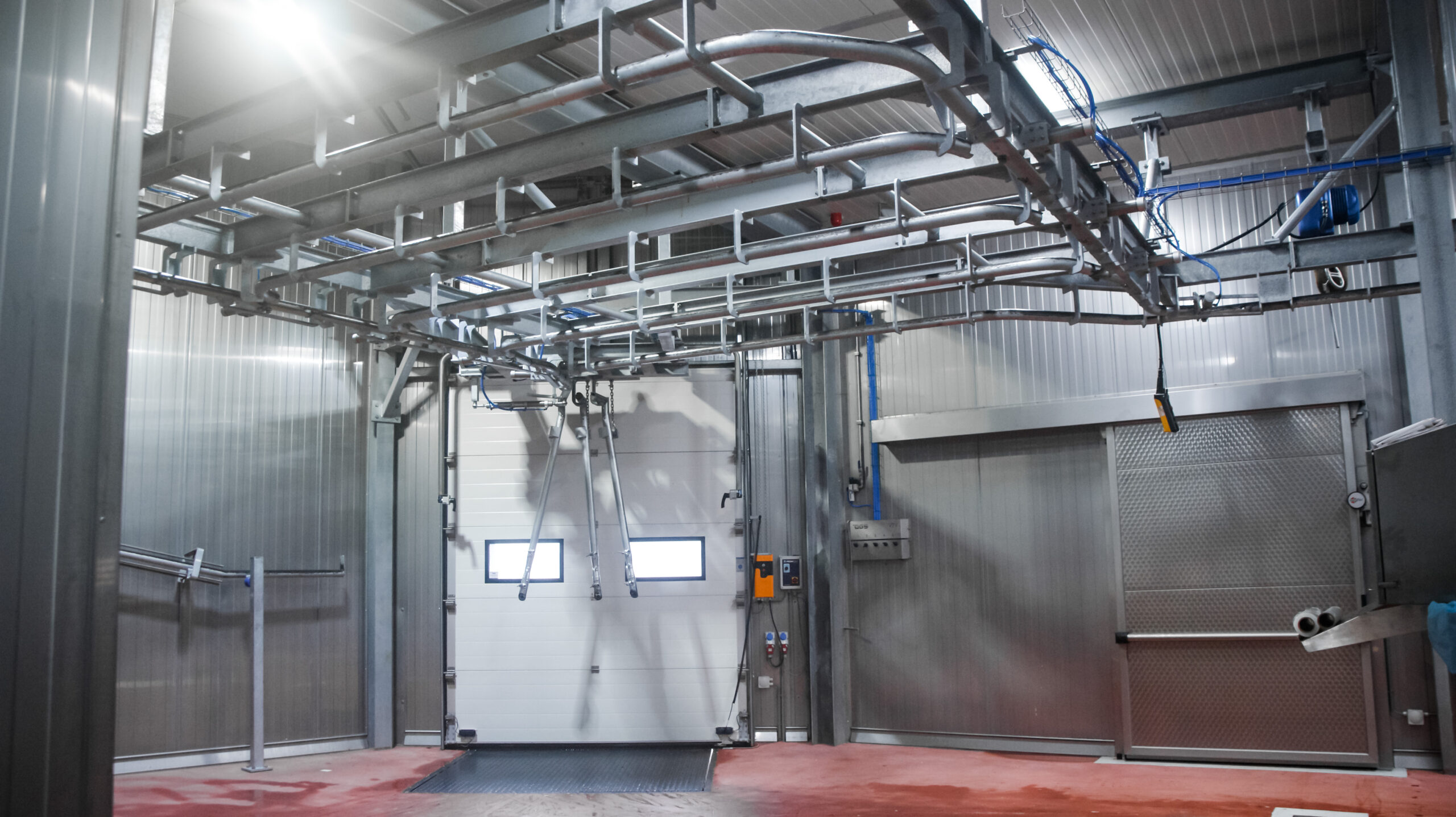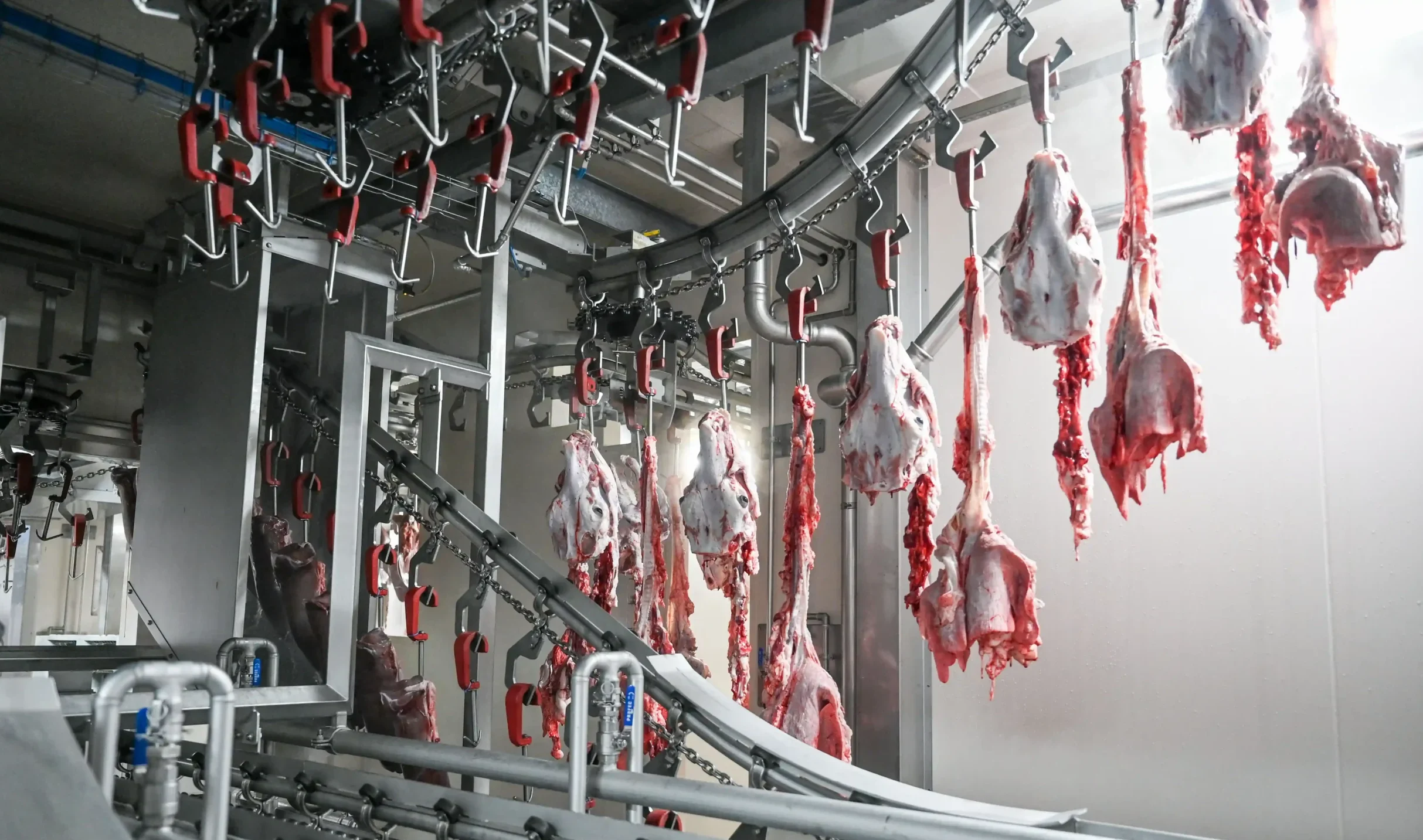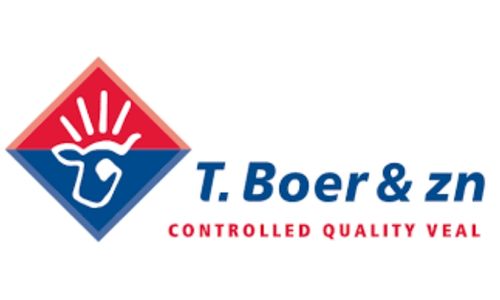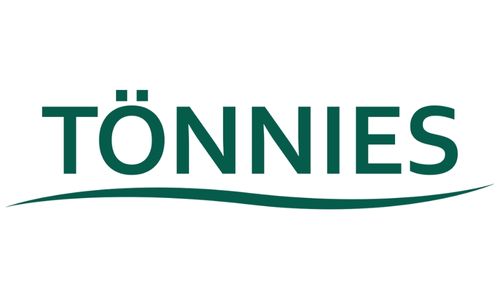Optimization of cold stores with DGS transport systems
DGS provides efficient solutions for setting up cold stores within veal, beef and pig slaughterhouses and equips these areas with conveyor systems connected to the current infrastructure. Our offer ranges from simple manual rail systems to fully automated cold stores. It is also possible to integrate a suitable Warehouse Management System (WMS) for full traceability of all products.
Our systems are designed to optimise the storage, cooling and transport of carcasses, organs and by-products, with the aim of maintaining low initial germination rates and ensuring quality. In addition, we offer rapid chilling solutions to minimise dehydration losses immediately after slaughter.
- Minimises direct contact with carcasses
- Improves ergonomics for workers
- Seamless integration with other systems
- Minimises risk of contamination
Each cold store is customised using modular building blocks. Our systems are designed to withstand the challenging conditions in a slaughterhouse, delivering long-term performance with minimal downtime. Moreover, our conveyor systems are easy to clean and maintain.
Personal advice
We are happy to discuss the possibilities with you.
References

Automating cold stores
DGS offers various overhead conveyor configurations for refrigeration units in slaughterhouses: manual, semi-automatic, and fully automated. In manual setups, products are manually moved over push rails by employees, with switches at the entrance and exit of the storage lane.
However, this process can be automated by adding chain transport conveyors, walking beams, or automatic storage conveyors. Additionally, automatic rotating arms can be placed on the input and/or output switches to move products over the switch.
Automating overhead conveyors in refrigeration units reduces labor intensity, increases efficiency, and ensures consistent performance, resulting in improved productivity and quality.
More informationRail systems from DGS
DGS offers a comprehensive range of various types of rails designed for different applications in slaughterhouses, including cold stores. This includes:
Galvanized steel tube tracks: available in 1.5″ and 2″ sizes, suitable for roller or slide hooks.
Plastic tube: available in 1.5″ and 2″ sizes, suitable for roller or slide hooks.
Bi-Rail (Twin Track): closed system and suitable for use with B20_B25 trolleys.
Flat Rail: developed for use with flat rail trolleys.
Our rail types can be adapted to current infrastructure and requirements on request. In addition, we offer the option of supplying all rails in stainless steel.

Quick Chiller
With rapid cooling, carcasses are cooled immediately after slaughter with high air speed and low temperature, resulting in less dehydration loss and higher efficiency. DGS offers various conveyor systems for rapid cooling.
Our rapid cooling conveyor has no underlying tube conveyor; the chain is equipped with load hooks from which the product hangs. On request, the conveyor can be equipped with an underlying rail (tubular rail/bi-rail/flat rail), made of galvanised steel, stainless steel or plastic-coated rail. On request, the conveyor can also be supplied in stainless steel with a stainless steel chain for increased hygiene and durability.
More information













